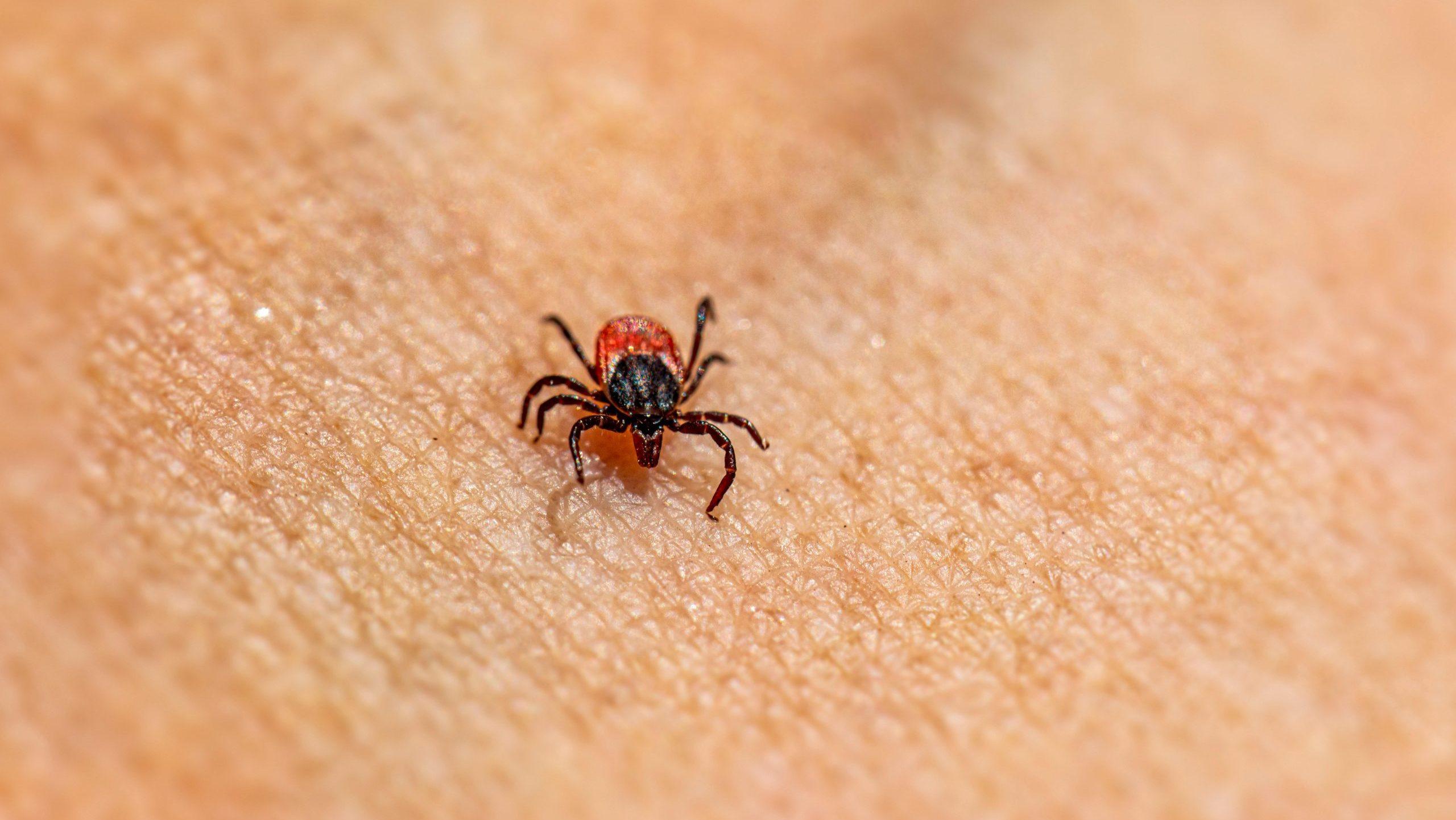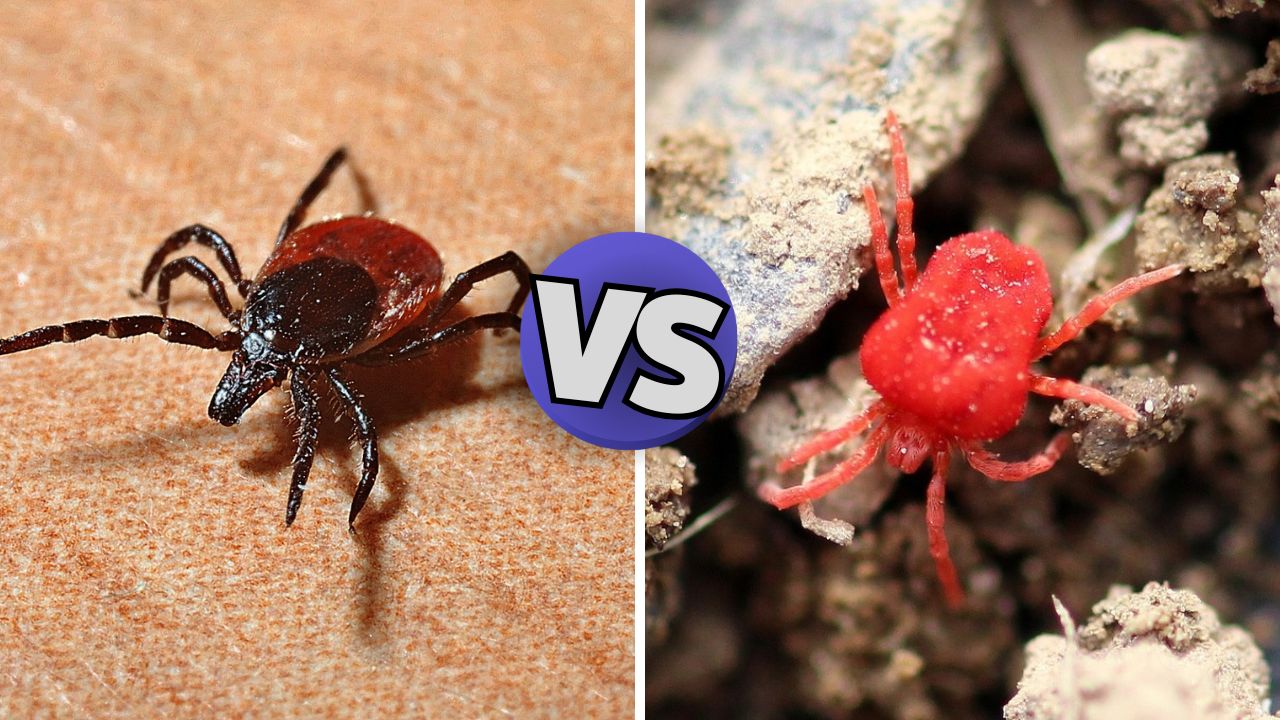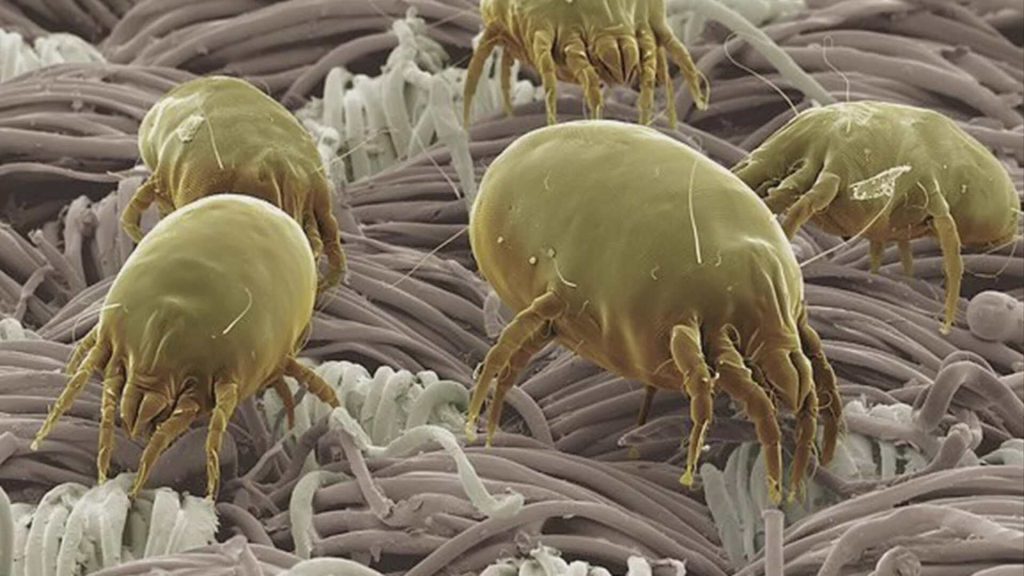Key Takeaways
-
Mites are microscopic and mostly harmless; ticks are larger and parasitic.
-
Mites have compact, non-segmented bodies; ticks have flat, segmented, oval-shaped bodies.
-
Mites feed on debris, plants, or animals; ticks feed on the blood of mammals, birds, and reptiles.
-
Mites live in soil, plants, and homes; ticks prefer wooded areas, grasses, and shrubs.
-
Mites can cause skin irritation and allergies; ticks can transmit serious diseases like Lyme disease.
-
Mite infestations show rashes, plant webbing, or dust in bedding; ticks are found on pets or humans with bite marks.
-
Prevent mites with cleanliness, humidity control, and plant inspection; prevent ticks with clothing, repellents, and yard upkeep.
-
Spider mites damage plants; ticks pose health risks through disease transmission.
 Ticks and mites are tiny arachnids often mistaken for each other due to their similar size and appearance. However, these pests differ in their habitats, behaviors, and impact on humans and animals. Understanding the differences between ticks and mites is essential for effective pest control and prevention. This article highlights their key characteristics, habitats, and practical tips for managing infestations.
Ticks and mites are tiny arachnids often mistaken for each other due to their similar size and appearance. However, these pests differ in their habitats, behaviors, and impact on humans and animals. Understanding the differences between ticks and mites is essential for effective pest control and prevention. This article highlights their key characteristics, habitats, and practical tips for managing infestations.
What Are Mites?
Mites are microscopic arachnids that inhabit a wide range of environments. While many mites are harmless and beneficial, others can cause skin irritation, allergies, or damage to plants and stored goods.Key Characteristics of Mites
-
Appearance: Mites are typically less than 1 millimeter long, making them difficult to see without magnification. They have a compact body with no visible segmentation and come in various colors depending on the species, such as reddish-brown or green-brown.
-
Do Mites Have Wings?: No, mites do not have wings. They rely on their eight legs for movement.
-
Behavior: Most mites are scavengers or predators, but some species, such as chiggers and dust mites, feed on humans, animals, or organic debris.
-
Habitat: Mites thrive in diverse environments, including soil, plants, animals, and human dwellings. Dust mites are commonly found in bedding and carpets, while spider mites attack plants.
What Are Ticks?
Ticks are parasitic arachnids that feed on the blood of mammals, birds, and reptiles. They are larger than mites and pose significant health risks due to their ability to transmit diseases.Key Characteristics of Ticks
-
Appearance: Ticks range in size from 3 to 29 millimeters, depending on the species and whether they are engorged with blood. They have a flat, oval-shaped body that expands significantly after feeding.
-
Behavior: Ticks are obligate blood feeders, attaching to hosts for extended periods. They can transmit diseases like Lyme disease, Rocky Mountain spotted fever, and anaplasmosis.
-
Habitat: Ticks prefer wooded areas, tall grasses, and shrubs where they can latch onto passing hosts.


Not getting a solution?
Get your free pest control estimate today!Chigger vs. Tick Size
Chiggers are the larval stage of certain mite species and are much smaller than ticks. While ticks can be seen with the naked eye, chiggers are almost microscopic, measuring less than 0.5 millimeters. Despite their tiny size, chiggers can cause intense itching and red welts due to their bites.Mite vs. Tick: Key Differences
Understanding the differences between mites and ticks helps identify and manage these pests effectively.| Feature | Mites | Ticks |
|---|---|---|
| Size | Microscopic, less than 1 mm | Larger, 3-29 mm |
| Body Structure | Compact body with no segmentation | Flat, oval body with clear segmentation |
| Diet | Organic debris, plants, animals | Blood of mammals, birds, reptiles |
| Habitat | Soil, plants, human dwellings | Wooded areas, tall grasses, shrubs |
| Impact on Humans | Skin irritation, allergies, plant damage | Disease transmission (e.g., Lyme disease) |
Mites Look Like What?
Mites are tiny and often resemble specks of dust or small dots. Depending on the species, they may appear reddish-brown, yellowish, or even translucent. Their small size and quick movement make them difficult to detect without close inspection.Signs of Tick and Mite Infestations

Signs of Mite Infestations:
- Itchy red bumps or rashes on the skin.
- Presence of fine webbing on plants (spider mites).
- Dust-like particles in bedding or carpets (dust mites).
Signs of Tick Infestations:
- Ticks attach to pets, livestock, or humans after outdoor activities.
- Presence of ticks in grassy or wooded areas.
- Red, swollen bite marks, sometimes with a bullseye rash (Lyme disease).
Tips to Prevent Mite Infestations
-
Maintain Cleanliness: Regularly vacuum carpets, clean bedding, and reduce clutter to eliminate dust mites.
-
Control Humidity: Keep indoor humidity below 50% to discourage mite proliferation.
-
Inspect Plants: Check and treat plants for spider mites to prevent damage.
Tips to Prevent Tick Infestations
-
Wear Protective Clothing: When in tick-prone areas, wear long sleeves and pants, tucking pants into socks.
-
Use Tick Repellents: Apply EPA-approved repellents containing DEET or permethrin.
-
Check for Ticks: Thoroughly inspect yourself, pets, and children after spending time outdoors.
-
Maintain Yard: Keep grass trimmed and remove leaf litter to reduce tick habitats.





